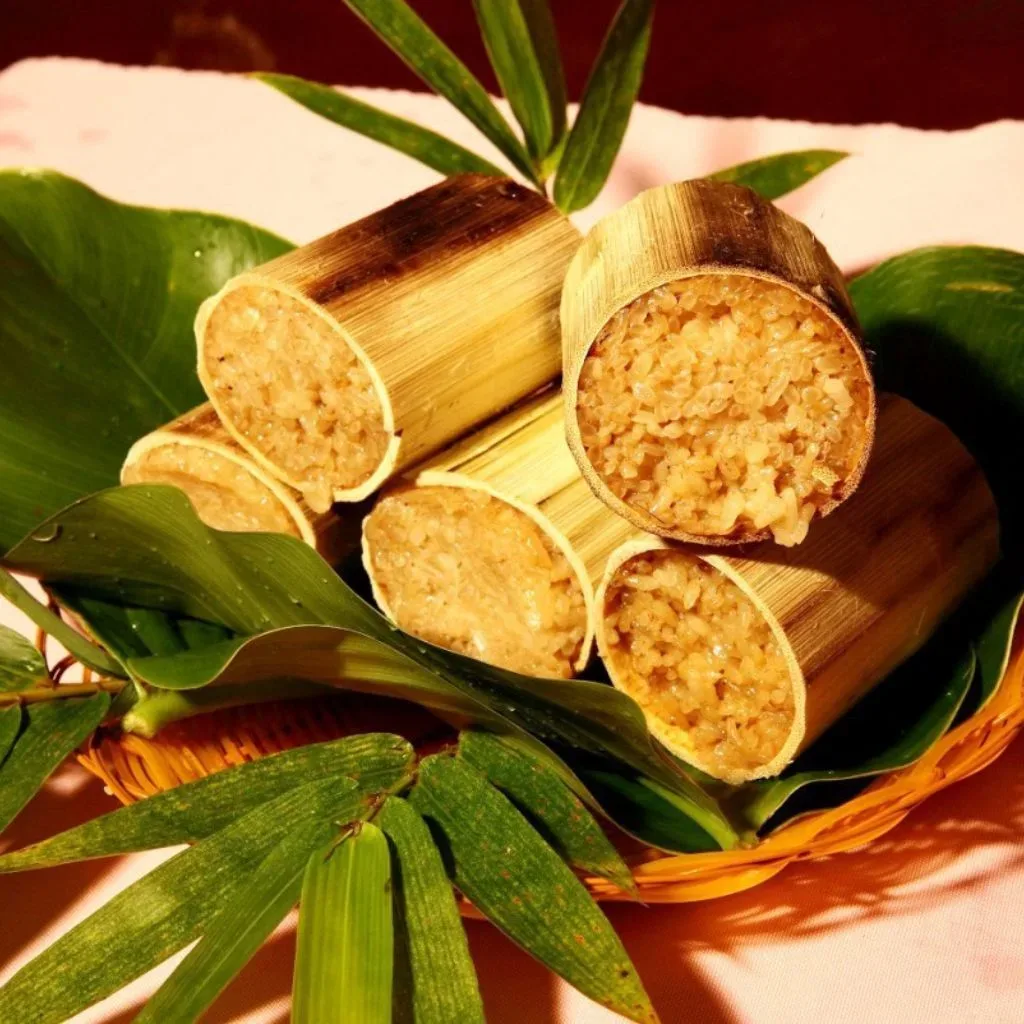Bamboo rice is a new kind of rice to the average consumer. It has greenish leaves, long grain, flat shape, and contains a long chain of carbohydrates. Bamboo rice is nutritious diet food for people who need to lose weight or make their bodies strong. It is also known as brown rice, white rice and black rice.
Table of Contents
ToggleBut what is bamboo rice?
Most people don’t know, actually, they don’t even know that they are eating brown and white rice because they are not aware of it. So, what is the use of BAMBOO RICE? And where did it originate and how do you cultivate it?
Here I introduce you to some interesting facts about bamboo rice which will surely help you in order to know more about this superfood which can be very beneficial for your health.

History
Bamboo rice has been popular since ancient times in South and Southeast Asia. It is made from bamboo shoots and rice. It is a kind of traditional Chinese food. Its origin can be traced back to Zhuxian village in Hebei Province, China during the Qing Dynasty (1644 – 1911).
All around Southeast Asia, the meal is referred to by many names, such as paung din or kauk hnyin kyi dauk in Burmese, kralan in Khmer, khao lam in Lao and Thai, and cm lam in Vietnamese. It is known as lemang in Malaysia and Indonesia, and is commonly consumed with rendang during Eid-ul-Fitr celebrations. In Kerala, it is the tribes near and around the wayanad forest region cultivate the most amount of Bamboo rice and this is also a great way of income for some tribal groups around that region.
How it is cultivated
Bamboo rice is a type of grass. It is a naturally gluten-free plant and bamboo rice is a highly nutritious food. People eat the grain of the plant called Bamboo rice as it is or prepare it in different ways. The name of the plant comes from its edible seeds which look like ‘rice grain’. Bamboo trees flower at the end of their life span which in turn produce seeds for new
bamboo.The process of producing bamboo seeds can take up to 30 to 40 years, which is the common life span of bamboo trees this can extend to up to 60 years.
Therefore it is not that ideal to cultivate bamboo rice on a commercial basis and the lion’s share of the bamboo rice on the market is mostly from forests of South East Asian
countries.
Nutritional value of bamboo rice
Why is it a better alternative to regular rice
1. Best calorie dense food
A cup of bamboo rice contains 160 calories, or 8% of the daily recommended intake of 2,000 calories for an average person, making it a fairly calorie-dense food. But bamboo rice can be easily burned off through exercise if you’re dieting. For instance, 15 – 18 minutes of jogging or 15 minutes of rope jumping can easily burn 160 calories.
2. Rich in Carbohydrates
In bamboo rice, carbohydrates are the main source of calories. This variety of rice has 34 g of carbohydrates per cup, which is 9 g more than a cup of oatmeal has. As carbohydrates give your body energy, they can be good fuel for athletic activities.
3. Fiber for better digestion
Dietary fiber, a crucial form of carbohydrate, is not abundant in bamboo rice. Only 1 g of fiber is present in each cup of this product. You need fiber to keep your digestive system in good shape, help you feel full, and ensure stable blood sugar levels.
4. It Also has some protein
Like other varieties of rice, bamboo rice contains teensy amounts of protein. Only 3 g of protein, or about half the amount in an egg, are included in each cup. Protein is necessary for cellular and tissue repair and growth in your body.
5. Fat-free food
There is no fat in bamboo rice. This can help you if you’re dieting because fat contains a lot of calories but also gives you energy and aids in vitamin absorption.
Health benefits of Bamboo rice
1. Promotes fertility
According to a study, female rats fed bamboo seeds became sexually active to the point
where each one gave birth to almost 800 young during the bamboo flowering season.
This discusses how rice derived from bamboo’s seeds can alter chromosome structure
and increase human fertility. Infertility in women is primarily brought on by endocrine
and metabolic abnormalities, which can be treated using bamboo oil made from
bamboo seeds.
2. Could stop diabetes
Linoleic acid, a strong antioxidant, is present in bamboo rice in good amounts. Bamboo
rice can assist enhance ovulatory functions in women with PCOS and prevent the
development of diabetes because, as we all know, PCOS can cause glucose
intolerance and raise the chance of developing diabetes.
3. Encourages healthy bones
Rheumatoid arthritis and other chronic diseases are mostly brought on by inflammation.
The condition has an impact on the bones and joints. Numerous bioactive substances
found in bamboo, including flavonoids, alkaloids, and polysaccharides, have been
shown to have anti-inflammatory and antioxidant properties. It might aid in lowering
inflammatory cytokines and regulating back, rheumatic, and joint pain.
4. Controls cholesterol.
Bamboo rice has a lot of fiber and phytosterols, a plant sterol that resembles cholesterol
in people. By preventing LDL from being absorbed, phytosterols lower LDL levels in the
body. Additionally, the fiber in bamboo rice aids with satiety and decreases cholesterol
5. Helps to regulate blood pressure
The primary causes of high blood pressure are hormonal issues and high cholesterol.
Bamboo rice has antioxidant properties that help to heal endocrine diseases, and it also
contains fiber, which lowers cholesterol levels. This might aid in controlling blood
pressure and reducing artery thickening.
6. Improves mood
Products made from bamboo offer a variety of protective properties, including impacts
on nervous system disorders. Brown rice, which is made from bamboo seeds, is well
known for its ability to control mood. Serotonin and dopamine, two essential
neurotransmitters that assist elevate mood and enhance cognitive functioning, are
released as a result of its effects.
7. Preserves oral health
The preventive effect of vitamin B6 against dental caries is discussed in a study. Vitamin
B6 is widely available in bamboo rice. This necessary vitamin may aid in preventing
dental caries or cavities by defending the teeth against bacterial decay or destruction.
The teeth can be strengthened with the use of vitamin B6.
8. Effective for cough
Bamboo rice contains a healthy quantity of phosphorus, which can aid with respiratory
problems including annoying coughs and sore throats. Additionally known to have
antiasthmatic qualities, phosphorus may aid in easing the symptoms of long-term
asthma.
9. Forgoes vitamin deficiencies
B vitamins are abundant in bamboo rice, especially B6 (pyridoxine). Red blood cell
synthesis, neurological health, and cognitive growth all depend on this vitamin. Anemia,
seizures, Alzheimer’s, and cognitive impairments can all be brought on by vitamin B6
deficiency in both adults and children. Because bamboo rice contains vitamin B6, eating
it may help prevent the aforementioned illnesses.
Use of bamboo rice
Bamboo rice is known for its interesting taste as it has a sweet and sour taste with a hint of nuttiness.
Dried bamboo rice is a staple in Asian diets, cooked using nothing but hot water and salt. It has been described as being “solid and satisfying as a steamed rice cake,” though with a lighter texture. Bamboo rice grain is traditionally used in a variety of dishes, including congee, broths, soups, and stir-fries. Indian cuisine can be used as regular rice and can make all the top dishes u enjoy. You can’t go wrong with using Indian curries with bamboo rice.
Conclusion
Bamboo Rice is a healthy, nutritious alternative to normal white rice. Our bamboo rice is grown using organic methods, so you can feel confident that you’re getting a high-quality product and that our customers are taking advantage of the best use of bamboo rice to advance their heal

